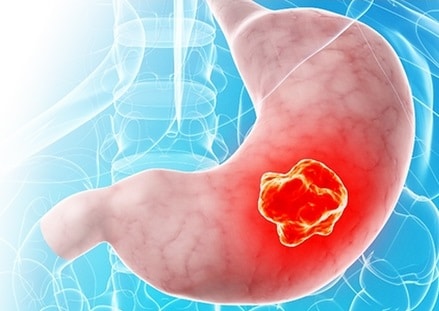Second Medical Opinion
Trust & Confidence
+91 8150000200
Book Appointment
Mon - Sat: 9:00 - 20:30
Appointment timing
Trust & Confidence
Book Appointment
Appointment timing
A tumor in a stomach may need part of the stomach to be removed. In order for a surgeon to do that, he or she needs to know the precise location of the tumor inside the stomach. The surgeon also needs to see the tumor in order to decide how much (or maybe all) of the stomach has to be resected or removed. The doctors will discuss with you beforehand.

Symptoms of Stomach Tumour
The above symptoms do not necessarily indicate the presence of a tumor. However further tests may establish that. Non-surgical treatment like radiotherapy or chemotherapy is generally ineffective in managing stomach cancer and surgery is usually required. If the tumor spreads beyond the stomach, the oncologist will discuss other treatment options for you.
Before Laparoscopic Gastrectomy
Patients will be subject to several tests and examinations before the procedure. These can include standard blood tests, urine analysis, endoscopy (the doctor looks down your throat by inserting a small telescope attached to a camera, barium swallow x-ray, a nuclear medicine scan and a CT Scan of the abdomen. Some regular medications may have to be stopped one week prior to the operation. Smokers and drinkers will also have to cease their vices.
Laparoscopic Gastrectomy
The procedure is similar to all other laparoscopic procedures. The surgeon makes 4-5 small incisions on the abdomen and inserts a narrow tube (port) in one of the incisions. The surgeon releases a gas (mostly carbon dioxide) into the abdomen through another incision. As a result, the abdomen is inflated so the surgeon can better see the interior on camera. The laparoscope is a tiny telescope attached to a camera, which is inserted into the abdomen through the port. The camera transmits the internal images on a television screen.
Surgical instruments are inserted through the rest of the incisions, which are used to remove the part of the stomach where the tumor is located. The surgeon then expands one of the incisions and removes the part, which is kept in a plastic bag. If the entire stomach has been removed or it is no longer functional, the surgeon attaches the small intestine directly to the esophagus with surgical staplers, so that the patient can eat again. The carbon dioxide and other instruments are now removed through the incisions, which are closed with stitches, steri-strips or glue-like bandages.
Complications of Gastrectomy
Gastrectomy has the potential to manifest the following complications and perhaps others not mentioned below:
Convalescence and Recovery
Patients are usually discharged 3 to 4 days after the laparoscopic gastrectomy. Your bowels should be fully functional by the time you can go home. You should limit strenuous activity or heavy lifting for about a month.
Call Your Surgeon
Consult your surgeon immediately if you experience any of the following:
Dr. Manas Ranjan Tripathy has achieved acclaim in proctology. His areas of expertise are sophisticated minimally invasive laser surgeries for Hemorrhoids or piles, anal fissures, anal fistulas with special expertise in laser Hemorrhoidopexy and recurrent and complex fistulas.